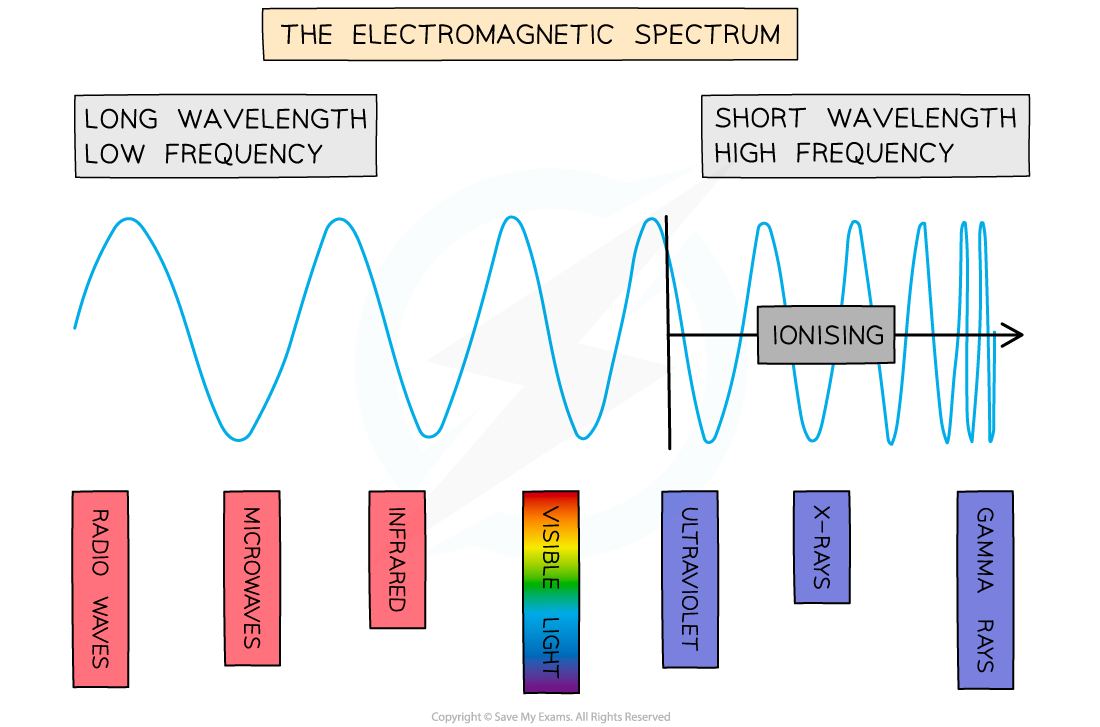Dangers of EM Waves (Oxford AQA IGCSE Physics)
Revision Note

Author
Leander OatesExpertise
Physics
Dangers of EM Waves
In general, electromagnetic waves become more dangerous the shorter their wavelength
The main risks associated with electromagnetic waves are summarised in the table below:
Dangers of EM Waves Table
Wave | Danger |
Radio |
|
Microwave |
|
Infrared |
|
Visible light |
|
Ultraviolet |
|
X-rays |
|
Gamma rays |
|
Ionising Radiation
Radiation from radioactive emissions and short wavelength regions of the electromagnetic spectrum can ionise atoms
This is referred to as ionising radiation
Beyond the visible part of the spectrum, the energy becomes large enough to ionise atoms
As a result of this, the danger associated with EM waves increases along with the frequency
The shorter the wavelength, the more ionising the radiation
Although the intensity of a wave also plays an important role
In general, electromagnetic waves become more dangerous the shorter their wavelength
For example, radio waves have no known harmful effects whilst gamma rays can cause cancer and are regarded as extremely dangerous
Because of ionisation, ultraviolet waves, X-rays and gamma rays can have hazardous effects on human body tissue
The effects depend on the type of radiation and the size of the dose
Ionising radiation can interact with atoms, damaging cells by the energy they carry and causing mutations, making them cancerous
Ionising regions in the electromagnetic spectrum

Because of the harmful effects of ionising radiation, safety precautions must be taken during exposure
UV protection (sun lotion) should be worn to protect skin from harmful ultraviolet radiation when out in the sun
Time limits should be adhered to when using UV tanning beds, along with goggles to protect eyes from damage
Film badges should be used for people who work with X-rays to monitor exposure levels
Lead aprons or vests should be worn by people having X-ray scans
Gamma rays for cancer treatments should be aimed at the target from different directions to minimise exposure to healthy tissues

You've read 0 of your 0 free revision notes
Get unlimited access
to absolutely everything:
- Downloadable PDFs
- Unlimited Revision Notes
- Topic Questions
- Past Papers
- Model Answers
- Videos (Maths and Science)
Did this page help you?